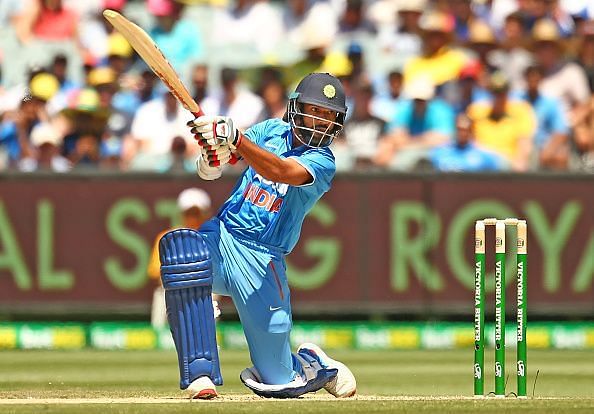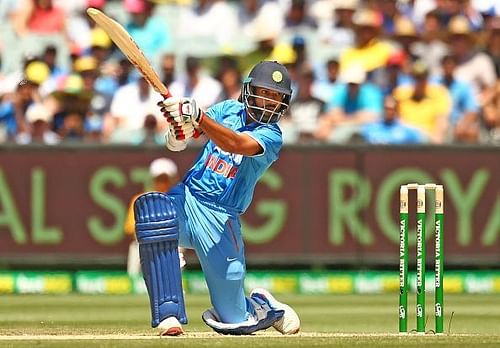
The Shikhar Dhawan Dilemma

Shikhar Dhawan claimed after his century against Hong Kong in India’s first Asia Cup encounter that he had never been out of form. This holds ground because even in the one-day leg of India’s tour of England, he had consistent scores of 40, 36 and 44. It was the Test series that went horribly wrong for the Delhi opener.
Dhawan has a decent record in One-day Internationals, having amassed 4654 runs at an average of 46.54. He possesses a strike rate of 94.07 and has 14 centuries and 25 half-centuries to his credit. These statistics show that Dhawan is indeed a brilliant white-ball cricketer. It is when we expect the same from him in red-ball cricket that the left-hander disappoints.
He had a disastrous Test series against England and failed to score even one half-century. He was constantly opened up by Stuart Broad and was found wanting against James Anderson’s accuracy and movement off the pitch. Dhawan chased a lot of balls looking to play shots with a flourish, shots that would have come off brilliantly if the bowler had not been James Anderson and the conditions not English. It is a well-known fact that Dhawan fancies himself against lesser opposition and it was proved by the century he scored before lunch in Bengaluru against Afghanistan in June.
It is not to say that Dhawan can be termed as a flat-track bully. He has played more Tests and One-day Internationals overseas than at home. In fact, he has scored five of his seven Test hundreds and four of his 14 One-day hundreds away from home. But why do people constantly write him off and feel that he has no place in the Indian XI?
Dhawan, like his famed predecessor from Delhi, Virender Sehwag, possesses a no-nonsense attitude of playing cricket. He believes in the theory of ‘see the ball, hit the ball.’ While this kind of approach has paid rich dividends for him in limited-overs cricket where the white ball is hard and swings lesser than the red ball does, it has landed him in trouble in Test cricket where bowlers aim to bowl at the corridor of uncertainty and around off-stump. While those slashes and expansive drives fetch him boundaries in One-day cricket, the same shots go to the slips in red ball cricket. There is a fine line in between both the formats and Dhawan needs to find that, so as to not cross it and like the great Sehwag, stay within his boundaries.
Amidst all talk of him getting dropped from the Test team, Dhawan continues to impress in one-day cricket. A week after arriving from England, he subjected the Hong Kong bowlers to some brutality and walked away with a 120-ball 127 in the Asia Cup. He followed that up with an assuring 46 against arch-rivals Pakistan in India’s second game. It is hard to judge a cricketer when he puts up performances like these.
Who is better- Dhawan the Test cricketer or Dhawan the One-day cricketer? This is a dilemma that concerns India today. At the moment the latter seems to be outshining the former and perhaps the time has come to limit him to one format only.
Dhawan has been given enough opportunities in Test cricket and should be made to go back to domestic cricket, refine his technique and if persistent with his performances, be handed with a recall.
It will be difficult to find a more charismatic, emblematic and elegant left-handed opener in domestic cricket who is in fine nick but Test cricket needs solidity and not flashiness at the top of the order. Youngsters like Mayank Agarwal, Prithvi Shaw and Shubman Gill have been knocking at the doors for some time now. Maybe it is time that they are given a go and Dhawan is branded purely a white ball specialist.